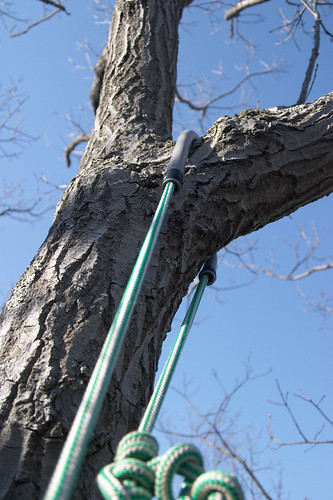Erie Buoy
ArboristSite Lurker
I've done a lot of reading on these forums in the past few months and find them to be very informative -- so complete in fact that I've not needed to make a post until now since I'm still a relative newcomer to recreational climbing.
I saw the Dan House Rope Saver at New Tribe and decided I could make my own rather than pay $25 for one. So, I bought a 30" section of 3/4" flexible conduit at Lowe's and pressed some PVC bushings in each end. The rope goes through the saver just fine, plenty of room to spare and not much friction.
I tried it out in the tree today and wasn't able to get my homemade rope saver to stay in the crotch -- on ascent it would pull out of the crotch and onto the running end of my DdRT setup and on the descent it would fall off of the limb and onto the working leg of the rope. Can anyone tell me if this experience is consistent with the Dan House Rope Saver (DHRS)? If the DHRS does work well, what is the magic? I know that there are other types of plastic covered conduit -- can anyone describe what type is used for the DHRS? Is the DHRS "pre-bent" in some way to make it stay in the crotch better? I guess I could spend $25 to find out, but I'd rather spend it on something I know I can't make . . .
I saw the Dan House Rope Saver at New Tribe and decided I could make my own rather than pay $25 for one. So, I bought a 30" section of 3/4" flexible conduit at Lowe's and pressed some PVC bushings in each end. The rope goes through the saver just fine, plenty of room to spare and not much friction.
I tried it out in the tree today and wasn't able to get my homemade rope saver to stay in the crotch -- on ascent it would pull out of the crotch and onto the running end of my DdRT setup and on the descent it would fall off of the limb and onto the working leg of the rope. Can anyone tell me if this experience is consistent with the Dan House Rope Saver (DHRS)? If the DHRS does work well, what is the magic? I know that there are other types of plastic covered conduit -- can anyone describe what type is used for the DHRS? Is the DHRS "pre-bent" in some way to make it stay in the crotch better? I guess I could spend $25 to find out, but I'd rather spend it on something I know I can't make . . .
Last edited:





